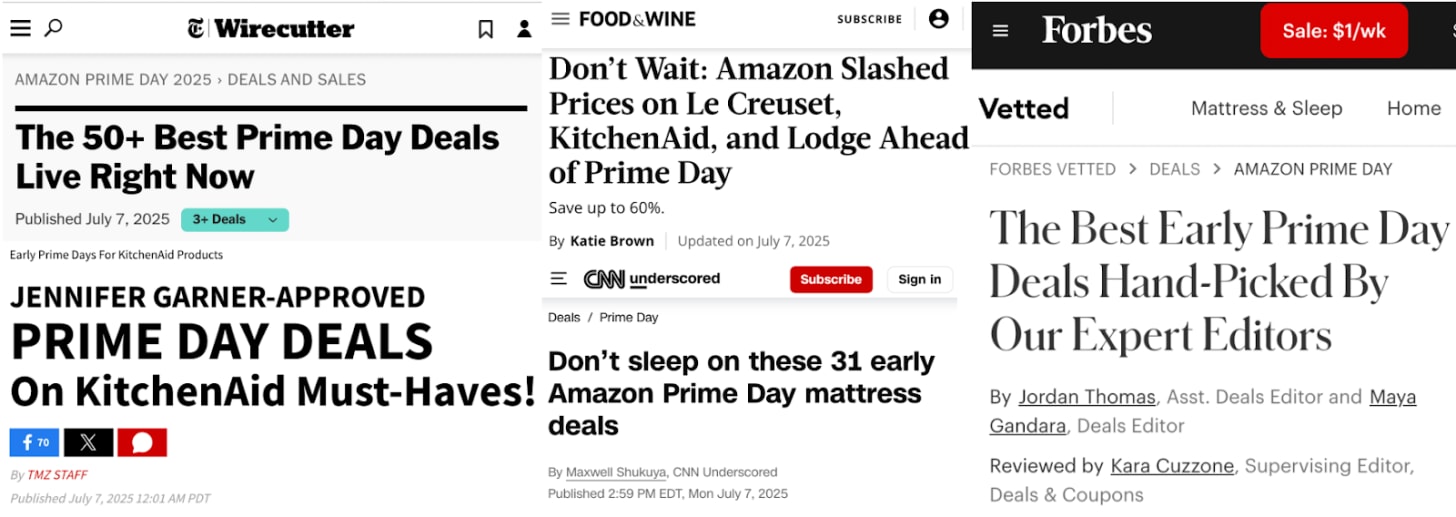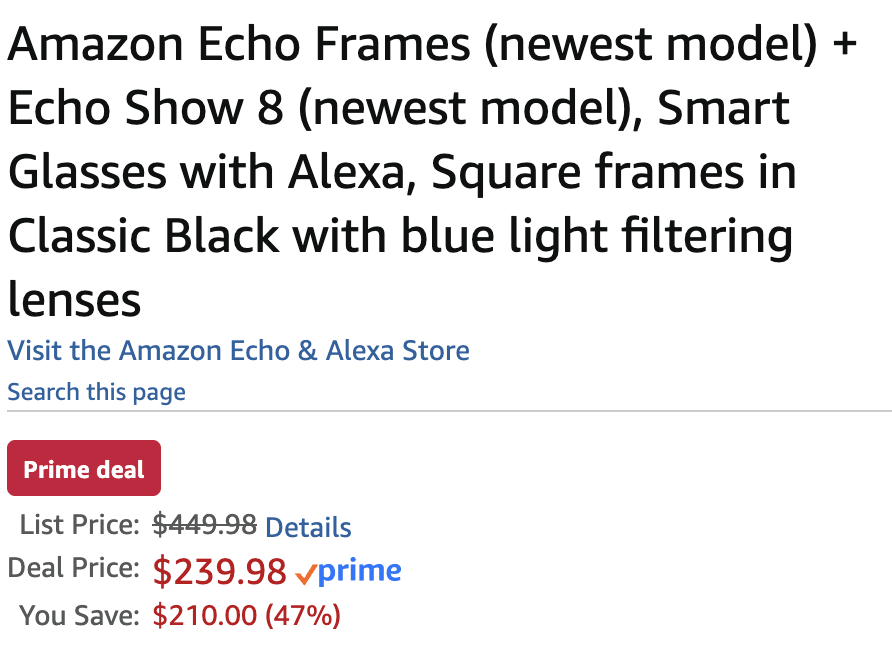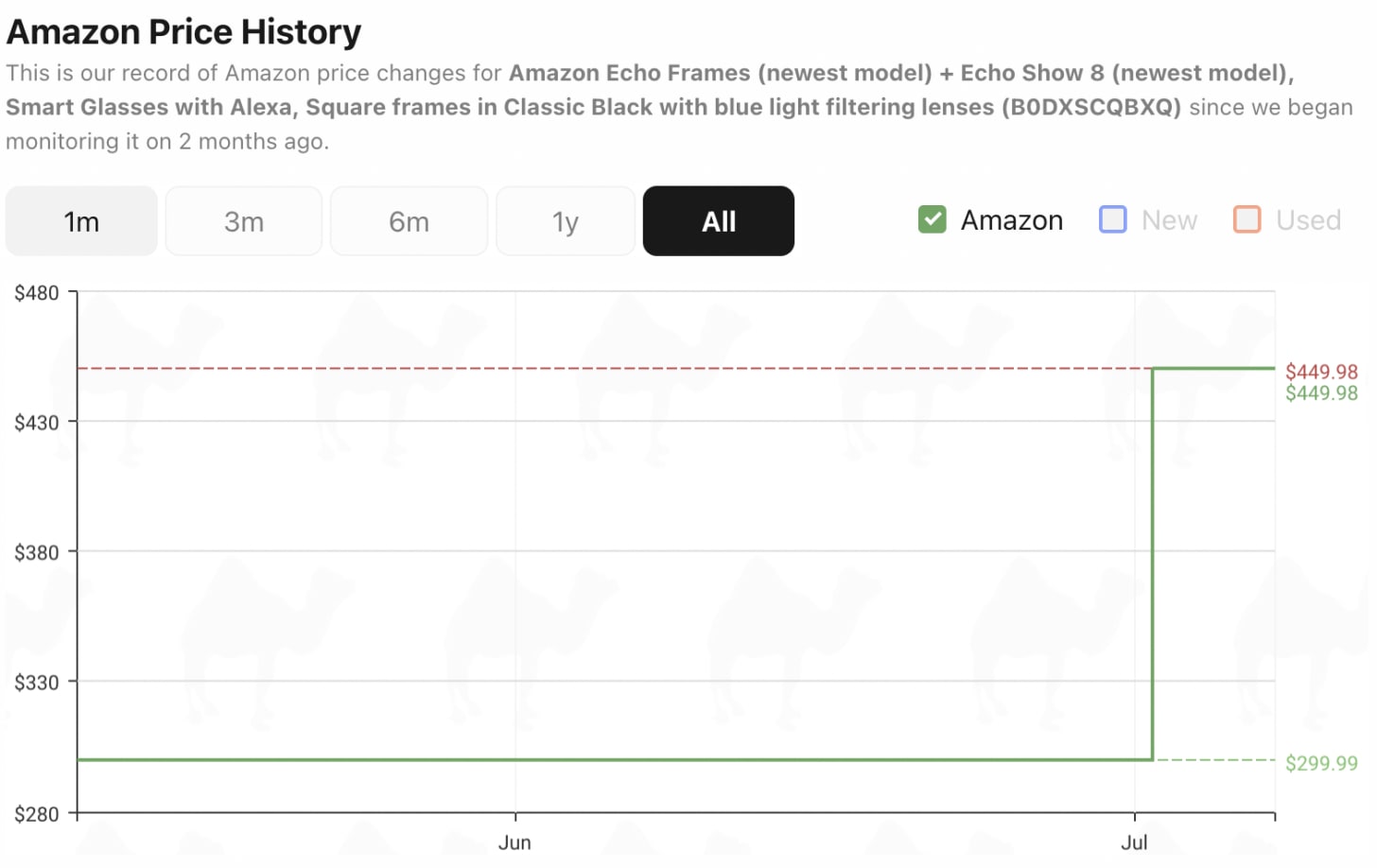Amazon Prime Day is a four-day sale promoted by the mega-retailer as a rare opportunity to secure "deep discounts" on a variety of consumer items. In reality, Amazon deploys deceptive tactics to exaggerate its markdowns and create a false sense of urgency. Featured items are often available at similar or lower prices at other times.
Nevertheless, major media outlets produce a massive number of "articles" promoting Amazon Prime Day, as if it is a genuine news event. This isn't an accident. Amazon provides financial incentive for news organizations to produce this content.
Bank of America estimates that Amazon will rack up "$21 billion in total sales over the four days, up 60% from last year's estimates." In many cases, buyers are being manipulated into purchases with scammy tactics.
The Shark Pet Cordless Vacuum Cleaner, for example, is a featured "Early Prime Day" product. Amazon says the sale price for this vacuum, $149, represents a 50% discount off of the $299.99 "list price."
The online tool Camel Camel Camel, which tracks prices of Amazon products over time, reveals that, since monitoring began in 2019, the vacuum was not listed at $299.99 until May 21, 2025. Its average price is about $200. Over the last year, the same vacuum was available for $149 in November, December, March, April and May.
The same vacuum is available right now for $149 at Best Buy, Macy's, Lowe's, and Ace Hardware.
Similarly, in another featured "Early Prime Deal," the Ninja Air Fryer Pro XL is on sale for $119.99, which Amazon says is a 33% discount off the list price of $179.99.
But Camel Camel Camel tracking reveals that the airfrier was not listed at $179.99 until May 19, 2025. It has been available for $119.99 or less every month since last November. Last November and December, the same product was sold on Amazon for $89.99.
The same air fryer is also currently available for the same $119.99 price from the manufacturer, Macy's, Best Buy, Kohl's, and Wayfair.
Amazon plays the same game with its own products. It is offering a bundle of its newest smart glasses and smart screen for $239.98, which Amazon says is a 47% discount off of the list price of $449.98.
But the exact same bundle has been offered since the beginning of June for $299.99. The price was only raised to $449.98 on July 1, 2025. So the "Early Prime Deal" is a sale, but the discount is really 20%, not 47%.
List price inflation has been a systemic issue with Amazon Prime Day for years. In 2022, the New York Times' Wirecutter reported that, for many featured items during Prime Day, "the 'before' price is artificially inflated to make it seem like you’re getting a bigger discount than you really are." In 2019, Fast Company found that "prices are often artificially raised" before Prime Day and other Amazon sales "only to be dropped to create the 'discount.'" In 2017, a company that sells foot deodorizers said that Amazon almost doubled its list price "on Prime Day to make it look like people were getting a discount, when they were actually paying full price." A 2017 study by Consumer Watchdog found "61 percent of all reference prices were higher than any observed price charged by Amazon in the recent past 90 days."
Amazon also engages in a variety of tactics to imbue shoppers with a sense of urgency to buy items right away. This might explain why the company insists on continuing to call the event "Amazon Prime Day" even though it now lasts 96 hours. The idea is to communicate that if a consumer does not buy something now, they will end up wasting money by buying it for a higher price later.
Amazon ratchets up the pressure through the liberal use of "Lightning Deals" during Prime Day. These are deals that Amazon says will only be available for a few hours or minutes. A newer innovation is "invite-only deals," where shoppers "request an invitation to purchase items that are expected to sell out." The system is designed to convince consumers that if they are fortunate enough to receive an invite for one of these deals, they should complete the purchase immediately.
Of course, the reality is that sales occur frequently on Amazon and at other retailers that sell the same products. There is no reason to purchase an item immediately just because Amazon claims it is offering it at a low price. Alaina Fingal, an expert in personal finance, stressed that "Prime Day encourages impulse shopping" and that "we end up purchasing things that we don't need."
So if Amazon Prime Day is rife with psychological and price manipulation, why do media outlets, which need the trust of their readers, continue to relentlessly promote it? Amazon has created a financial incentive to do so. The company pays a referral fee of 1 to 10% for customers who buy a product after reading about it in a news article. Around Prime Day, Amazon increases the percentage it pays for referrals. According to reports, Amazon has doubled the commission it is paying in some product categories for this year's Prime Day event.
People are more likely to buy products if they believe they are getting a great deal. So these media companies have a financial interest in convincing readers that Amazon Prime Day has lots of "deep discounts," whether or not that is true.
.png)











